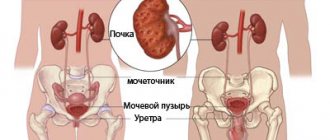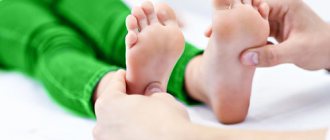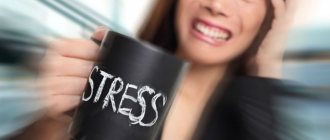If your lower back hurts while lying on your stomach, do not ignore the pain and accompanying symptoms: they may indicate health problems. A timely visit to a doctor and professional consultation will help begin treatment and prevent even more serious problems. The nature of lower back pain in the supine position (when you lie on your stomach or back) can already tell a lot and indicate what, where and for what reasons it hurts:
- aching nature of the pain - possible overtraining and muscle overload, as well as problems with the genitourinary system;
- severe shooting pain, which is accompanied by an increase in temperature, may be associated with cancer;
- local pain and point painful sensations are usually associated with arthrosis and rheumatism. The frequency and nature of pain are one of the main characteristics that help in making a diagnosis and prescribing treatment.
Reasons why the lower back hurts when lying down
Often, pain in the lumbar region indicates chronic diseases that either did not manifest themselves before, or the patient did not pay attention to them. There are two categories of reasons: • problems caused by discomfort; • diseases (chronic and recently occurring). Treatment is selected according to the causes of problems.
Hard surface, awkward position
Discomfort and pain in the lower back occur when the sleeping place is chosen incorrectly - an old sofa or bed, a non-orthopedic or old mattress, pillows that create tension in all parts of the spine and, accordingly, cause pain. Prolonged physical activity, incorrect exercise technique or incorrectly selected weights during strength training, playing sports in shoes not intended for this - this and much more in most cases leads to injuries and pain in the lumbar region and other parts of the spine. Pain is caused by an uncomfortable sleeping position, prolonged lying down, as well as late pregnancy.
Elimination of lower back pain
The appearance of pain in the lumbar region is a signal of a disruption in the functioning of the body. It is necessary to establish the exact cause of the disease that provokes the pain, after which treatment is prescribed.
A visual inspection is not enough to accurately diagnose the problem. It is necessary to do an x-ray, computer or magnetic resonance imaging. Such an examination will help make the correct diagnosis and choose appropriate treatment.
First of all, it is recommended to eliminate pain, stop the inflammatory process, and relieve swelling. For this purpose, medications are used in the form of tablets and ointments - NSAIDs, muscle relaxants, steroid drugs. In case of severe acute pain, anesthetic injections are used. .
When medication treatment is contraindicated, physiotherapy, massage, and manual therapy are used to relieve pain and relax muscles. The method of acupuncture is effective.
Traditional methods for lumbar pain
The natural components of compresses have an analgesic and anti-inflammatory effect, help relieve morning stiffness, improve the functioning of internal organs and normalize the body’s salt metabolism. They are used as independent treatment or in combination with conservative methods.
Compress recipes:
- grated horseradish with the addition of sour cream is applied to the place of pain, covered with a linen napkin and wrapped in woolen cloth. The compress relieves muscle tension caused by pain;
Check out the traditional medicine recipes for treating the lower back; the healing effects of using burdock leaves have been proven. Dried leaves are doused with boiling water and applied to the lumbar region. Cover with a warm cloth and keep the compress for no more than one hour;- A cold compress made from a mixture of garlic and lemon is effective. Chopped garlic is mixed with lemon juice, applied to a cotton cloth and applied to the area of pain for 20 minutes. Helps with chronic pain;
- moisten gauze in horse chestnut tincture and leave as a compress overnight;
- a warming compress of sea salt diluted in hot water in a ratio of 1 to 10. After moistening cotton cloth or gauze, apply to the site of pain projection, cover with a warm cloth;
- Infuse 40 grams of crushed golden mustache stems in 500 ml of bischofite for two weeks. Strain and make compresses at night.
Physiotherapy
Did you know that...
Next fact
It is important to eliminate problems in the lumbar region by using physiotherapy, which includes electrotherapy and physical therapy .
The most effective method of electrotherapy is medicinal electrophoresis. Magnetic therapy is used to reduce swelling and pain. Phonophoresis relieves inflammation and provides micromassage at the cellular level.
The use of Darsonval is popular; ozonized currents restore blood circulation and relieve muscle tension. Darsonval is convenient for use at home.
Therapeutic exercise is mandatory and is prescribed during the period of reducing lumbar stiffness and pain . Classes help normalize motor functions, strengthen and elasticity of muscles, and flexibility of the spine.
Specially developed complexes of physical therapy exercises are performed on the recommendation of a physiotherapist. At home, when doing physical education, you must be careful, without stress, sudden movements or bending.
The use of physiotherapy helps relieve muscle tension in the lumbar region and eliminate pain. The mobility of the spine returns.
Video: “Effective exercises for lower back pain”
Massage
Therapeutic massage is aimed at stretching blocked muscles and restoring blood circulation , carried out carefully using gentle stroking movements. The massage is performed by a qualified specialist. In addition, the use of stone therapy, shiatsu, and acupressure is effective. There are situations when massage needs to be done at home.
You can help yourself by doing a massage yourself:
- gentle stroking movements in the direction of the tailbone for 3 minutes;
- for the next 3 minutes, stroke from the spine to the sides;
- stroking movements of the lumbar region using oils that have a relaxing effect.
Massage is one of the most effective means of spinal therapy. Compositions of lavender, thyme and sage oils are used. Rosemary or nutmeg oil stimulates blood circulation. Eucalyptus oil, camphor, pine essence and resin have a warming effect.
Vacuum cups are also used, which improve blood flow in the lumbar region . It is convenient to use a roller massager, Lyapko or Kuznetsov applicator at home. A bag filled with pine or spruce cones can replace the applicator and have the same effect. A regular plastic bottle filled with warm water can warm up the lower back area and relax the muscles.
a bath with the addition of essential oils of eucalyptus, juniper or sea salt will help relax muscles and eliminate pain .
If you have lower back pain when lying down, it is advisable to sleep on a hard bed with a cushion under your feet. This will relieve back muscle stiffness and reduce pain. .
It is recommended to wear a special corset for the lumbosacral region , due to which, within a short time, pain in the lower back is completely eliminated.
Prevention
If lower back pain occurs while lying down, it is necessary to avoid sudden movements and bending, physical activity, heavy lifting, and prolonged stay in an uncomfortable position . The sleeping area should be hard. Your back, spine, and lower back will relax and get complete rest on an orthopedic mattress.
It is necessary to walk more and take breaks during the day to do gentle physical exercise.
Dancing, yoga and swimming will relieve problems not only in the lumbar region, but also improve the health of the entire body. Following a healthy diet, moderation in alcohol consumption, quitting smoking, and losing excess weight will help avoid many diseases.
Diseases and pathologies
Recent and chronic diseases lead to the fact that a person begins to experience pain in the lumbar region and other parts of the spine.
Osteochondrosis, arthrosis, scoliosis
Pain syndrome with osteochondrosis occurs in the lumbar region and is constant, while the pain often moves up the back or radiates to the legs. Pain can appear both at rest and after physical activity. If the disease has taken a protracted or chronic form, then pain is possible even when coughing. With scoliosis, back pain appears constantly (when bending over, with an intervertebral hernia, during prolonged sedentary work, etc.) and leads to disruption of muscle function and tissue damage.
Ankylosing spondylitis
This is a chronic disease in which pain occurs in the spine and joints, worsens at night when a person goes to bed, and subsides during movement.
Pyelonephritis
With inflammation of the kidneys, lumbar pain intensifies both after movements and in a quiet position. Hypothermia is also a cause. Sometimes sharp pain appears even when pressing on the lower back. An increase in body temperature is also observed.
Duodenal ulcer
Along with specific symptoms, the disease is characterized by painful sensations, especially when feeling hungry. The pain begins in the right hypochondrium, and then moves to the back and right arm.
Injuries and bruises
Unpleasant/painful sensations are typical both for newly received injuries and bruises, and for long-standing injuries. The nature and duration of such back pain varies depending on the cause.
Oncological diseases of internal organs
Pain syndrome in oncology is characterized by:
- acute pain that occurs when tissue is damaged (for example, after surgery);
- chronic pain with constant tissue damage;
- a sharp sudden increase in chronic pain due to the intervention of external factors.
Rheumatoid arthritis
This is a chronic inflammatory disease that affects the joints and tissues of the spine and spreads over time to the internal organs. Pain in the lumbar region indicates damage to the joints of the spine. Why does your lower back hurt when you lie on your back? The reasons vary, but an increase in attacks at night clearly indicates the seriousness of the problem and requires medical intervention. If the pain is localized in the lower back, this may indicate problems in the pelvic organs, if in the abdominal region, it may indicate disorders in the gastrointestinal tract, etc.
Causes and nature of lower back pain
The causes of lower back pain when lying on the stomach are different and may indicate diseases of the spine, internal organs, and neuralgia .
Lower back pain usually appears due to diseases of the spine. Below is a list of the most common
The causes of pain are divided into primary and secondary. The primary type is characterized by dystrophic and functional disorders of the spinal column, congenital pathologies of the shape of the vertebrae. Secondary causes are caused by mechanical damage, disruption of internal organs, infections and viruses, and neoplasms.
Common factors for low back pain:
| Disease | Symptoms | Nature of pain |
| osteochondrosis | dystrophic disorders in the cartilage of the spinal discs | sharp back pain. When lying down, lumbar pain radiates to the legs |
| spondyloarthrosis | the disease is chronic. Occurs due to inflammatory diseases of the joints, types of arthritis | the nature of the pain is aching. When lying down, the pain spreads to the gluteal region. Stiffness in the lower back in the morning |
| scoliosis | lateral curvature of the spine, appears at school age | As a result of deformation, muscle tension occurs, which leads to painful spasms |
| osteoporosis | thinning of bones. Most often, an age-related pathology caused by a lack of calcium | the pain is dull, aching. Is permanent. Has a wide range of distribution: from ribs to lower extremities |
| ankylosing spondylitis | inflammation that results in fusion of spinal cartilage | severe morning pain, intermittent |
| referred pain | occurs in diseases of the genitourinary system, pancreas, gastrointestinal diseases | It's a dull pain. With a disease of the genitourinary system, pain from the lower back will spread to the lower extremities |
| neuralgia | pinched nerve roots of the lumbar region | acute attacks of pain, can be burning and aching |
How to relieve pain?
To reduce or completely remove pain, you need to know the cause of the pain. In order to find out the cause of the pain, you need to make an accurate diagnosis, and this will require the help of a specialist. The doctor will order tests and diagnostic examinations, and then give recommendations or prescribe treatment. What to do if the diagnosis is still unknown, but pain is present? There are a number of recommendations that you need to adhere to carefully: you can apply cold or, conversely, warm to the sore spot, but the main thing is not to overheat the sore spot. In some cases, light physical activity helps, for example, leisurely walking, light stretching, but you should not swing your legs or pump your abs. It is not recommended to take any actions without precise confidence in their correctness. The best solution would be to see a doctor.
Night back pain and its causes
The main signs of “safe” back pain include: association with physical activity or posture, absence of severe chronic illnesses, injuries, fever or numbness of the skin. If your back hurts mainly at night, it is advisable to understand the sources of discomfort. Here are a number of diseases that can cause night pain:
- Diseases of the gastrointestinal tract. Night pain radiating to the back is characteristic of an ulcer, sometimes pancreatitis or cholecystitis. Such pain is not relieved by massaging the painful area or changing body position.
- Kidney diseases. The lower back may ache with pyelo- and glomerulonephritis. Such pain is usually accompanied by an increase in body temperature and a change in the color of urine.
- Inflammatory diseases of the vertebrae and intervertebral discs. If the pain at night is intense and prolonged, a doctor’s examination is definitely necessary. Sometimes it is better to be safe than to miss a dangerous condition.
- Most often, night back pain is associated with muscle overload during the day or an uncomfortable bed.
Which doctor should I contact?
To find out why your lower back hurts when you lie on your stomach or back, you need to consult a professional. This could be a general practitioner or therapist who will provide a referral to a specialist. If there are problems in the spine and back muscles, then you need to go to a neurologist
, if in the genitourinary system - see a urologist or gynecologist. A general blood and urine test, x-ray, MRI or ultrasound may also be required. Seeing a doctor in a timely manner means taking care of your health, sound and healthy sleep.










